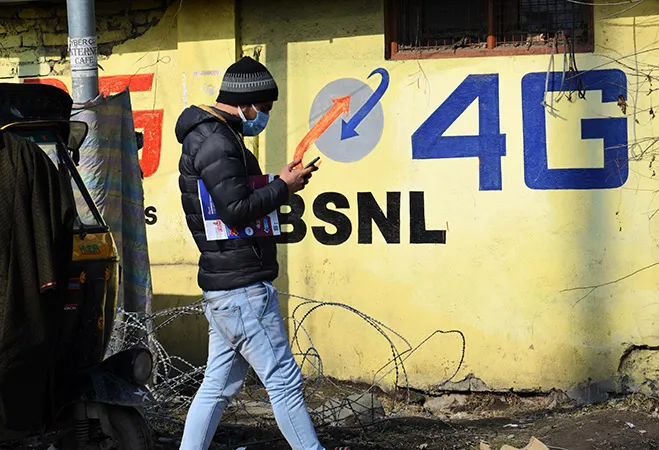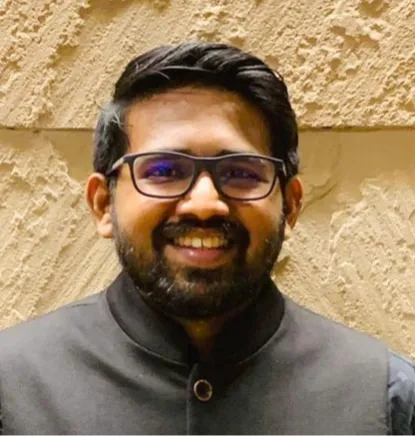
In
2020 alone, the Indian armed forces killed over 225 militants, including some 47 top commanders of various outfits. They
also arrested over 251 militants, recovered 41 improvised explosive devices (IEDs), and underwent 111 instances of gun violence with over 37 grenade attacks. The year also witnessed over
167 young militant recruits. All these indicators of 2020 exhibit either a small or drastic increase, when compared to that of 2019. Thus, indicating that the insurgency in Kashmir is far from over, regardless of the developments following August 2019. In this context, it is important to assess the technology that has facilitated the continuity of insurgency in Kashmir.
Firstly, the militants have continued to use Information Communication Technology (ICT) and social media to serve their anti-Indian purpose. Throughout the lockdown, extremist propaganda
continued through Telegram, Twitter, Facebook, and WhatsApp
vis-à-vis VPN servers. Even smaller and lesser-known messaging platforms such as
Nandbox came into use—to escape increasing state scrutiny. And when 2G internet was restored with
government restrictions, several
small size video and audio messages, along with on-point texts and briefings began to recirculate. Further, content, including videos (sometimes from bodycams) and posters, continue to promote extremist and militant narratives. These centralised narratives by
anonymous individuals indicate that social media handles are now being run by tech-savvy insurgents, attempting to hide their digital footprints. Most importantly, social media is
also being used to familiarise and attract people to new insurgent groups, such as the Resistance Front (TRF), People’s Anti-Fascist Front (PAFF), Kashmir Tigers, Al-Badr, etc. Thus, helping Pakistan to colour the conflict with an indigenous and secular approach.
In addition, the internet and social media have evolved with new vigour to train fighters, as India’s increased security deployment, alerted security grid, and COVID restrictions have
reduced infiltration from 130 in 2019 to only 30 by October 2020. Thus,
videos providing instructions, and introduction of weapons are being dubbed in Kashmiri, and are circulated on social media. Supplementing it, social media is also
being used by individuals to direct the supply of weapons to insurgent organisations. Militants have also used social media to threaten individuals vital to Indian security operations/ governance/ administration by releasing “
target/hit lists”.
In addition, the internet and social media have evolved with new vigour to train fighters, as India’s increased security deployment, alerted security grid, and COVID restrictions have reduced infiltration from 130 in 2019 to only 30 by October 2020
Another aspect of technology is the use of weapons. Despite a popular perception of insurgents facing a weapons crunch, they continue to
use handguns/pistols, AK 47s, AK 56s, Insas,
grenades, and IEDs. Another interesting development is the discovery of much developed and superior M4 Carbines. This US-made assault rifle was first recovered in Kashmir in
2017 and was expected to be supplied by the
Pakistani army, and its special forces. However, post-2019, these weapons were discovered in multiple instances and will likely be used more frequently, as intelligence inputs indicate that the M4 carbines are now being
produced illegally somewhere in Pakistan or Afghanistan. Supplementing it, recent raids have also reassured the debut of China-made
EMEI Type 97 NSR rifles, and
sticky bombs in the valley. Interestingly, most of these weapons are remarkably effective in stand-off attacks and eliminating specific targets, and are also being airdropped from Pakistan with the use of
drones.
However, to counter these developments, the Jammu and Kashmir (JK) police is also being equipped with modern technology vis-à-vis the Police Modernisation Program (PMP). Initially, in
2019, the government had sanctioned some money to buy 50 unmanned aerial vehicles (UAVs) which were later increased to
100 in 2020. These category
three UAVs are expected to monitor protests and also participate in counterinsurgencies. The J&K police are, thus, intending to provide
at least two drones per police station in a phased manner. In addition, Indian forces are also
being trained to target and shoot down the drones. However, to effectively deter the drones and mitigate their threats of weapons supply, the armed forces and J&K police need to invest in anti-drone guns, nets, signal jammers, and anti-drone rays through their modernisation programme.
In addition, the police have floated tenders to
procure bullet-resistant vests, explosives diffusing devices, bulletproof vehicles, and over
50 armoured vehicles with installed GPS tracking systems. They have also
requested robots and fighter helicopter(s). These purchases are expected to reduce the casualties, and also conduct better monitoring and surveillance. There is also emerging importance
for total containment vessels or truck bombs and
anti-mine vehicles to both detect and defuse bombs and IEDs, considering their increasing presence and threats to the armed forces. Further, the police have also demanded over
4,000 weapon safety systems, which are equipped with GPS trackers and biometric technology that lets only authorised individuals use them. Thus, preventing terrorists from snatching weapons and having access to modern weapons and technology. However, the slow procuring process, bureaucratic hurdles, and COVID-19 has continued to disrupt the scheduled supply. But as police forces face the crunch, militants continue to be swiftly equipped and upgraded with modern technology because of the illegal nature their of transactions. Therefore, indicating an undue advantage over the state forces and weapons. It is, thus, vital for the state to fast track the process and implement practices and laws that reduces the procurement duration and red tape.
Social media and ICT has been another major concern for the security forces. For a major part of it, India’s cyber policy in Kashmir has been reactionary
Social media and ICT has been another major concern for the security forces. For a major part of it, India’s cyber policy in Kashmir has been reactionary. Its
cyber labs (run by J&K police) consistently monitor propaganda videos, posts, and profiles, and share the information with tech companies, who then remove these channels, content, and profiles from online platforms. But, since the process is not spontaneous, the content might reach the target groups before it is removed. In this context, it is also
argued that handwritten and vernacular posts propagating terrorism stay longer on online platforms when compared to English content. Hence, it has also become important for the modernisation programme to push for innovation or borrowing of Artificial Intelligence (AI), that, along with the human labour, can contribute to quick and swift action and monitoring against these posts and profiles. This will also be important to avoid blanket internet bans, and thus,
contribute to better coordinated and conducted counterinsurgency measures. Further, AI will also help counter fake news, violent propaganda, and also their anti-Indian narrative. Thus, providing space for India to replace it with well-articulated, consistent, and state-centric pro-India narratives.
The conflict in Kashmir is volatile and the region has seen a consistent flow of weapons and technology from Pakistan. The lack of red tape and the illegal flow of technology to the militants has given them an advantage over the state actors. It is, thus, important for the state forces to compete with the militants’ means and ease of technological procurement. It is only with this technological advantage that India would be able to further deter the ongoing infiltration, weapons supply, and youth radicalisation in Kashmir, and, therefore, contribute to lasting peace in the region.
Aditya Gowdara Shivamurthy is a research intern at ORF. He is a MSc International Relations graduate from the London School of Economics and Political Science (LSE).
The views expressed above belong to the author(s). ORF research and analyses now available on Telegram! Click here to access our curated content — blogs, longforms and interviews.



 In
In  PREV
PREV


